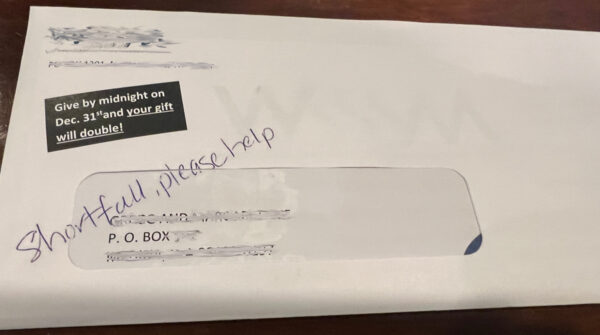Last Thursday’s post about mistakes got me to thinking…
Mistakes and disasters in fundraising are rarely fatal.
I’ve been part of a lot of mistakes and bad breaks over the years. (Which I think is true of anybody who has been in fundraising for any length of time.)
Just look at this partial list:
- The Anthrax Scare of 2001 – When poisonous anthrax was mailed to random people that October, everyone in America was afraid to open their mail, and donations through the mail just… completely… stopped.
- The Great Reply Card Swap – An appeal letter was sent out with a reply card for a completely different nonprofit. And that other nonprofit? Their donors received the reply card for the first nonprofit. Good times!
- Awkward Typos – When tens of thousands of donors were supposed to be asked to help “fill the pantry” at the rescue mission, and instead were asked to “fill the panty.” And as mentioned last week, when donors were supposed to be asked to “sign the enclosed placemat and return it with your gift“ were instead asked to “sign the enclosed placenta and return it with your gift.”
- The Host Who Eternally Lapsed – When the famous person you’ve hired for $50,000 to host the donor acquisition TV show… unfortunately passes away a couple months after filming. So you have to pull the shows off the air, reschedule the media buys, and reshoot all their portions of the program.
- The Poorly Timed Acquisition Campaign – When you launch a national donor acquisition campaign with TV spots, direct mail buys and print magazine ads… right as the 2007 great recession/subprime mortgage started.
All of these left a mark… but none were the massive blow that the organization initially feared.
I think the lessons are to control what you can control. Know that mistakes are going to happen. Send out more fundraising (having fewer fundraising pieces is risky because you’re more reliant on the performance of any one piece).
Donors are generous – they want to give. And it’s inspiring to see how nonprofits are resilient on behalf of their beneficiaries or cause.




